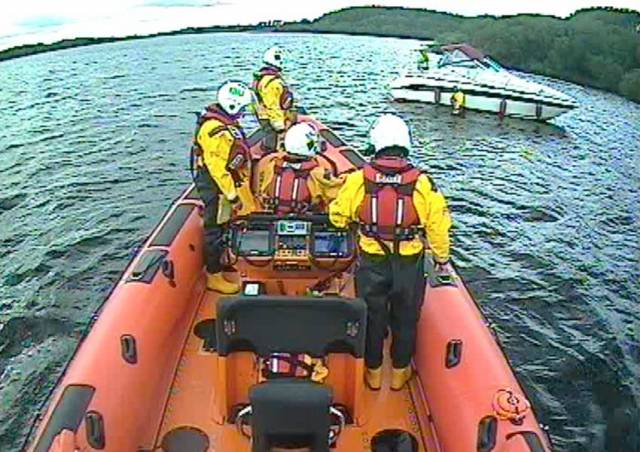#RNLI - Carrybridge RNLI’s inshore lifeboat and rescue water craft launched to assist a 23ft cruiser which had run aground close to the Share Centre on Upper Lough Erne yesterday evening, Sunday 5 August.
Winds were south-westerly Force 2 with good visibility and cloudy skies when the Carrybridge lifeboat crew were requested to launch by Belfast Coastguard at 5.20pm.
Arriving at the casualty vessel, the lifeboat crew found the cruiser aground and all four people on board to be safe and well.
On assessing the vessel, the volunteer crew found its mean of propulsion had also become damaged when it grounded.
After three of the casualty vessel’s crew were taken on board the lifeboat and transferred to the Share Centre, a tow line was set up with the assistance of the rescue water craft and the cruiser was refloated before being towedd back to its mooring at the Share Centre with its remaining crew member.
It was the second callout for Carrybridge RNLI over the weekend. On Saturday evening (4 August), the inshore lifeboat and rescue water craft launched to a 16ft rowing boat which was adrift in the main navigation channel.
The rowing boat had broken free from its moorings and drifted half a mile upstream from Carrybridge. The vessel was taken under tow by the lifeboat back to its own private mooring.
Speaking following these callouts, Carrybridge RNLI lifeboat operations manager Tom Bailey said: “As we continue to enjoy the good weather, we would remind all boat users to respect the water, plan your passage before setting out, and take particular care whilst navigating. Should you get into trouble, call 999 or 112 and ask for the coastguard.”
































































